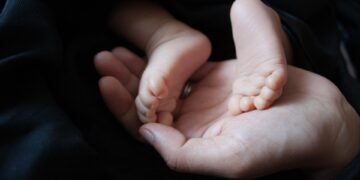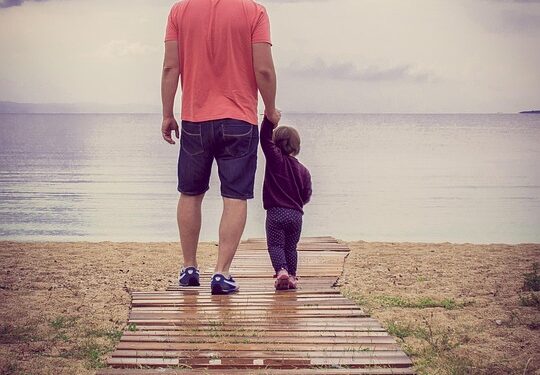Guarding Our Little Ones: Top Toddler Safety Tips Every Parent Should Know
As parents, ensuring the safety and well-being of our little ones is our top priority. Toddlers are curious and energetic beings, constantly exploring their surroundings and testing their limits. It is crucial for parents to be aware of potential dangers and take necessary precautions to prevent accidents and injuries. In this article, we will discuss some of the top toddler safety tips that every parent should know to keep their little ones safe and secure.
Childproofing Your Home
One of the most important steps in ensuring toddler safety is childproofing your home. Toddlers are naturally curious and can easily get into dangerous situations if the proper precautions are not taken. Here are some key areas to focus on when childproofing your home:
1. Secure Furniture and Electronics
Make sure that all furniture is securely anchored to the walls to prevent tipping. Keep electronics and cords out of reach or use cord organizers to prevent strangulation hazards. Cover electrical outlets with safety plugs to prevent electric shocks.
2. Lock Away Hazardous Items
Store cleaning supplies, medications, and other hazardous items in locked cabinets or high shelves that are out of reach of your toddler. Keep all sharp objects like knives and scissors in a locked drawer.
3. Install Safety Gates
Use safety gates at the top and bottom of stairs to prevent falls. Also, use safety gates to block off rooms or areas that are not toddler-friendly, such as the kitchen or home office.
Supervision and Vigilance
While childproofing your home is essential, it is also crucial to supervise your toddler at all times. Toddlers are fast and curious, and accidents can happen in the blink of an eye. Here are some tips for maintaining constant supervision:
1. Stay Close and Engaged
Stay within arm’s reach of your toddler when they are playing or exploring. Engage with them and keep an eye on their activities to prevent accidents from occurring.
2. Be Aware of Surroundings
Be mindful of potential hazards in your environment, such as open windows, unsecured furniture, or sharp objects. Stay vigilant and proactive in removing or securing these dangers.
3. Teach Safe Behavior
Teach your toddler about safe behavior, such as not running near the pool, not touching hot surfaces, and not putting small objects in their mouths. Encourage them to ask for help if they need assistance.
Safe Sleeping Practices
It is essential to create a safe sleep environment for your toddler to reduce the risk of Sudden Infant Death Syndrome (SIDS) and other sleep-related accidents. Here are some tips for safe sleeping practices:
1. Use a Firm Mattress
Ensure that your toddler’s mattress is firm and fits snugly in the crib. Avoid using soft bedding, pillows, or stuffed animals in the crib, as they can pose a suffocation hazard.
2. Avoid Overheating
Keep the room at a comfortable temperature and dress your toddler in lightweight, breathable clothing. Do not overdress your toddler or use heavy blankets, as they can lead to overheating.
3. Place Toddler on Their Back
Always place your toddler on their back to sleep to reduce the risk of SIDS. Do not place your toddler on their side or stomach, as this can increase the risk of suffocation.
Safe Travel Practices
Whether you are traveling by car, plane, or on foot, it is essential to practice safe travel habits to protect your toddler from accidents and injuries. Here are some tips for safe travel practices:
1. Use Proper Car Seats
Always use a properly installed car seat that is appropriate for your toddler’s age, weight, and height. Follow the manufacturer’s guidelines for installation and use to ensure maximum safety.
2. Secure Toddler in Stroller or Carrier
When traveling on foot, make sure that your toddler is securely fastened in their stroller or carrier. Use safety straps and harnesses to prevent falls or accidents.
3. Be Mindful of Traffic
When walking near roads or in parking lots, hold your toddler’s hand or use a safety harness to prevent them from running into traffic. Teach them to look both ways before crossing the street.
Emergency Preparedness
Despite our best efforts to keep our toddlers safe, accidents can still happen. It is crucial to be prepared for emergencies and know what to do in case of an accident. Here are some tips for emergency preparedness:
1. Have a First Aid Kit
Keep a well-stocked first aid kit in your home and car with essential supplies such as bandages, gauze, antiseptic wipes, and pain relievers. Familiarize yourself with how to use these items in case of an emergency.
2. Know CPR and First Aid
Take a CPR and first aid course to learn life-saving techniques in case of emergencies. Knowing how to perform CPR and administer first aid can make a significant difference in the outcome of an accident.
3. Create an Emergency Plan
Develop an emergency plan with your family that includes escape routes, meeting points, and contact information for emergency services. Practice this plan regularly to ensure everyone knows what to do in case of an emergency.
Conclusion
Ensuring the safety of our toddlers requires a combination of childproofing, supervision, safe practices, and emergency preparedness. By following the top toddler safety tips outlined in this article, parents can create a secure environment for their little ones to thrive and grow. Remember, the safety and well-being of our children should always be our top priority.
By implementing these safety tips, parents can have peace of mind knowing that they are taking proactive steps to protect their toddlers from accidents and injuries. With proper precautions and vigilance, parents can create a safe and secure environment for their little ones to explore, learn, and play without fear of harm.









































